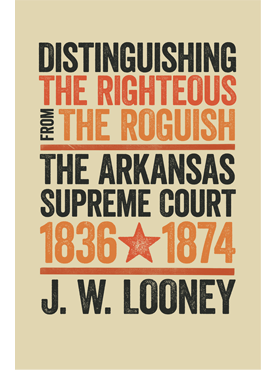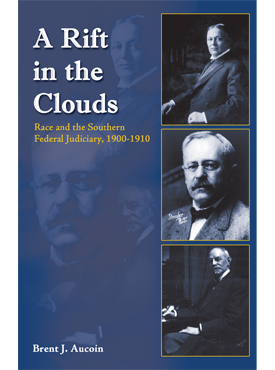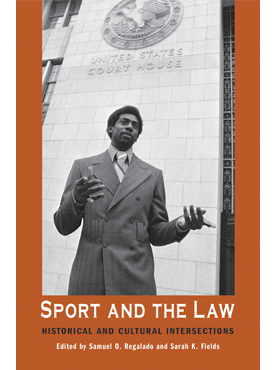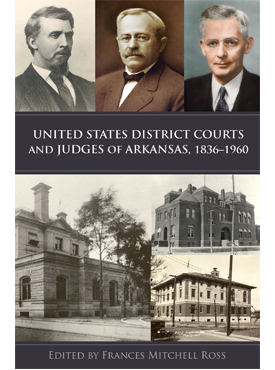During the period from 1836 to 1874, the legal system in the new state of Arkansas developed amid huge social change. While the legislature could, and did, determine what issues were considered of importance to the populace, the Arkansas Supreme Court determined the efficacy of legislation in cases involving land titles, banks, transportation, slavery, family law, property, debt, contract, criminal law, and procedure.
Distinguishing the Righteous from the Roguish examines the court’s decisions in this era and shows how Arkansas, as a rural slave-holding state, did not follow the transformational patterns typical of some other states during the nineteenth century. Rather than using the law to promote broad economic growth and encourage social change, the Arkansas court attempted to accommodate the interests of the elite class by preserving the institution of slavery. The ideology of paternalism is reflected in the decisions of the court, and Looney shows how social and political stability—an emphasis on preserving the status quo of the so-called righteous—came at the expense of broader economic development.
J. W. Looney is a retired judge for the Arkansas Eighteenth West Judicial Circuit and emeritus distinguished professor at the University of Arkansas School of Law where he also served as dean and was founding director of the graduate program in agricultural law.
“J. W. Looney knows more about antebellum Arkansas’s supreme court and its jurisprudence than anyone alive. Thank goodness we now have that knowledge in one volume. Distinguishing the Righteous from the Roguish will be an incredibly valuable resource for scholars of Arkansas history and the law.”
—Michael Pierce, associate professor of history, University of Arkansas
“Although the title suggests this material will interest only historians of a brief legal era, this book is quite a lively read. It views the settlement of Arkansas from the perspective of the state’s appellate courts. Looney, a retired state judge and emeritus distinguished professor of law at the University of Arkansas, rereads written opinions of antebellum Arkansas appellate courts dealing with land titles, banking, transportation (especially railroads), debt, family law, and crime, and interprets their legal and political significance with the aid of secondary sources. He carries the narrative through conflicts that arose during the Civil War and Reconstruction. Like those of other states, Arkansas courts were concerned with developing the law needed to to regulate a growing and changing economy. But Looney persuasively argues that broader economic development was sacrificed to the need to preserve the status of a politically active planter elite—the “righteous” of the title. Significantly, courts prevaricated to preserve slavery. Even after 1865, elites tried to maintain or recover their dominance. Looney’s narrative sometimes identifies “rogues.” Land title cases, especially, could turn on forged documents or perjured testimony. Interesting and valuable.”
Summing up: Highly recommended.
—P. Lermack, Bradley University, Choice, February 2017
“[A] substantial contribution to southern legal history.”
—The Journal of Southern History, November 2017
“Looney brings to his study a well-trained legal mind and a solid grasp of the nineteenth-century law and its institutions. His discussions of key decisions are clear and economically rendered. The chapters, crafted with accessible, straightforward prose, typically end with precise conclusions. The author provides useful quantification, meaningful categorizations, and cogent assessment of the various kinds of decisions handed down across the period, typically organized into periods corresponding to the tneures of the various chief justices… Distinguishing the Righteous from the Roguish is an admirable achievement. The book will prove vital to scholars interested in the history of Arkansas, the courts and jurisprudence of the state, and the law, society, and politics of the antebellum, Civil War, and Reconstruction-era South.”
—Mark M. Carroll, Arkansas Historical Quarterly, Spring 2017




